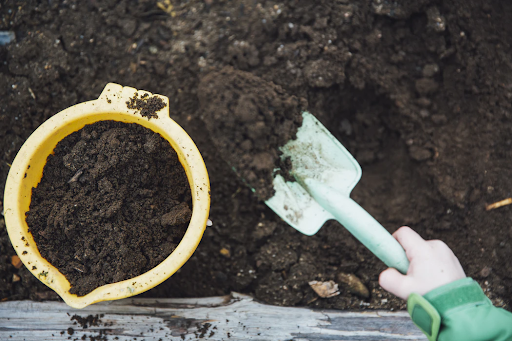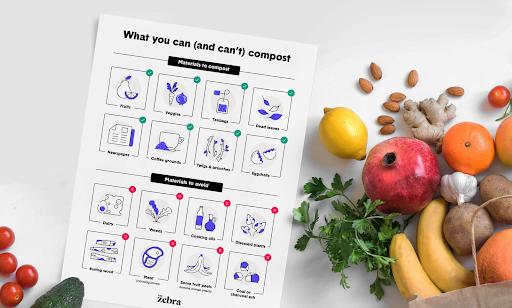
Find yourself spending more time at home these days? Try this at-home compost project that lets you reduce your family’s waste and create a healthy soil feeder for your yard and garden!
Setting up a compost pile or bin at home is fully customizable to fit your spaces needs, so whether you start composting in the backyard or the kitchen, you can start reusing your kitchen scraps for good.
Read on to learn more about how to start composting at home, and which materials you can (and can’t) compost.
Compost this, not that
Nearly 25% of solid waste from U.S. households comes from the kitchen. Composing allows you to reuse these scraps and give them back to the earth.
But even dirt is picky about what it eats. While composting is a great way to reuse some waste, not everything in your kitchen should end up in your pile. Composting the wrong materials can delay composition and produce a rotten egg smell.
Use our free printable to remind yourself what you can and can’t compost while you’re in the kitchen.

Your compost materials should be a mix of brown and green materials, and the ratio should be 3:1. Your brown compost ingredients are those that add carbon to your pile: think dead leaves and egg shells. Your green compost ingredients are those that add nitrogen to your pile, such as fruits and veggies.
Here’s a list of common brown and green ingredients:
Brown compost materials:
Add essential carbon to your compost with these common brown materials:
- Branches and twigs
- Shredded newspaper
- Dead leaves
- Egg shells
Greens:
These common kitchen scraps are great for providing nitrogen to your pile:
- Fruits and veggies
- Loose tea and tea bags
- Coffee grounds and filters
- Old flowers
Materials to avoid
Not every kitchen scrap should be tossed into your compost: in fact, some can turn your soil feeder into harmful material.
You should avoid these items when composting:
- Citrus fruit peels
- Meat and dairy
- Cooking oils
- Diseased plants and weeds
- Coal or charcoal ash
Setting up an outdoor compost pile
While you can compost indoors through methods such as vermicomposting and fermentation, setting up a compost pile outdoors is the most popular method. This helps keep strange odors outside of your home during the decomposition process.
Setting up your compost pile is simple! Follow these 6 steps:
- Find a spot in your yard for your compost pile:
Choose somewhere that gets natural shade. Bonus points if this area is near to a water source such as a hose!
- Gather compost materials:
Using our list of materials to compost (and toss), begin gathering your materials. You’ll want a 3:1 ratio of browns to greens. Set up an additional bin in your kitchen exclusively for compost so you can easily collect these.
- Add your brown and green layers:
Once you’ve collected your materials, it’s time to add them to your pile! Start with a brown layer first and then a green and continue rotating. Remember that your brown layers should be thicker.
- Use water in your compost:
Moisture is another important ingredient in your compost pile, but you want to make sure you don’t add too much water. A soggy pile can slow down decomposition and produce a rotten egg smell.
- Aerate your compost:
Every 3–7 days you’ll want to aerate, or turn, your compost ingredients using a shovel. This step helps you speed up the decomposition process. After a few aerations you should start to see changes in your compost pile. Once the organic materials you added start to decompose your compost should begin to feel warm and steamy–this is a sign it’s working!
- Use your compost as soil feeder
After two to four months of aeration, your compost should be ready for use! The compost should look like crumbly topsoil and produce a pleasant and earthy smell. If there is still an odor or organic materials are still in the dirt, this is a sign there’s still more decomposition that needs to be done.
Composting is a great way to reduce waste and improve your yard’s soil health. Learn about how to use your compost with this visual from The Zebra below:
Please include attribution to TheZebra.com with this graphic.
